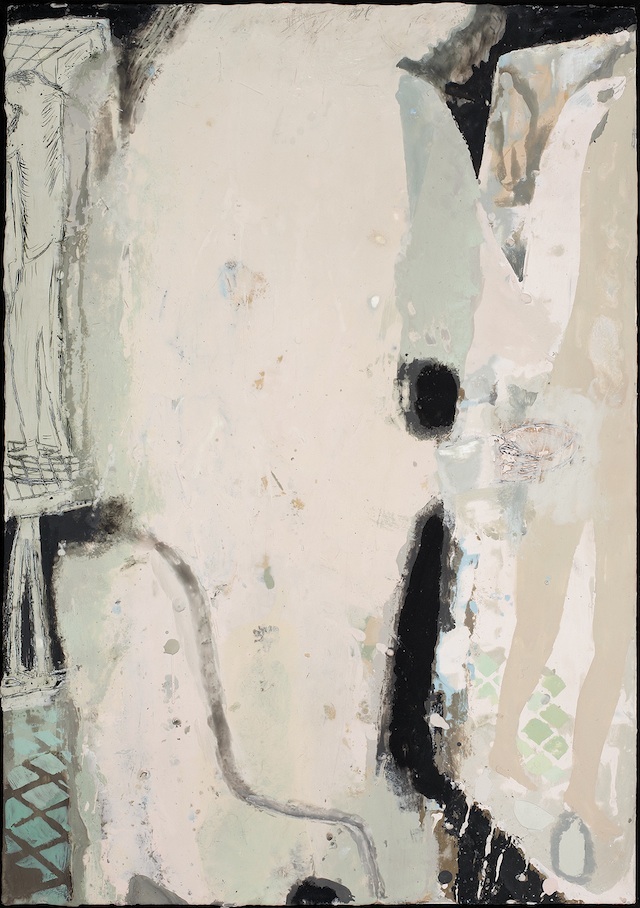My Ghost 2013 – Encaustic Paintings
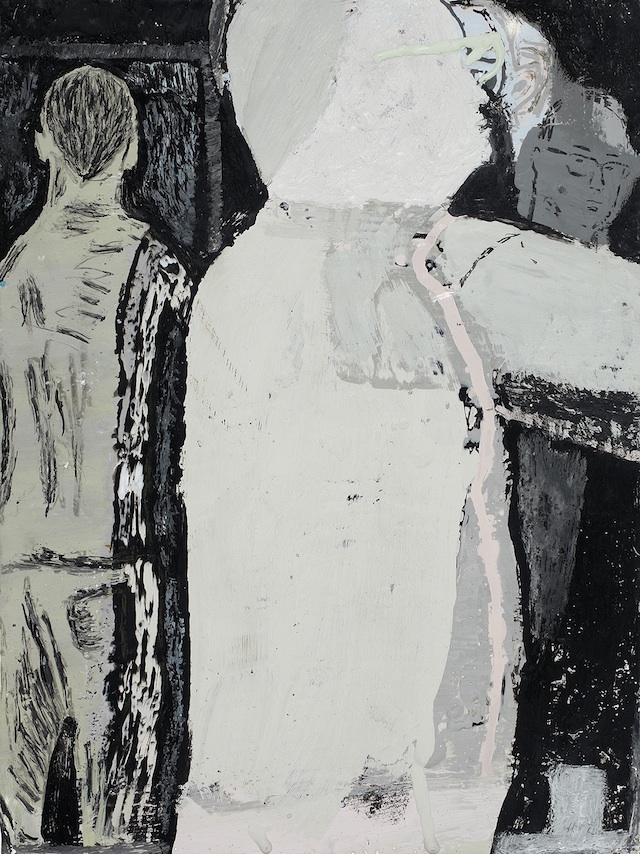
After the large exploratory life studies of the previous year, I felt the need to reduce the scale of the imagery and summarise my investigations into smaller, complete works.
The large paintings and drawings of 2012 had provided a thorough understanding of how my body was situated in space.
I wanted to extend this understanding into a variety of approaches, inviting an ambiguity between internal and external realms, and to give expression to the underlying drama of my undertaking.
It was at this stage that I began to use encaustic paint on boards. All of the following images were produced with encaustic. They range in size from 17cm to 70cm high.

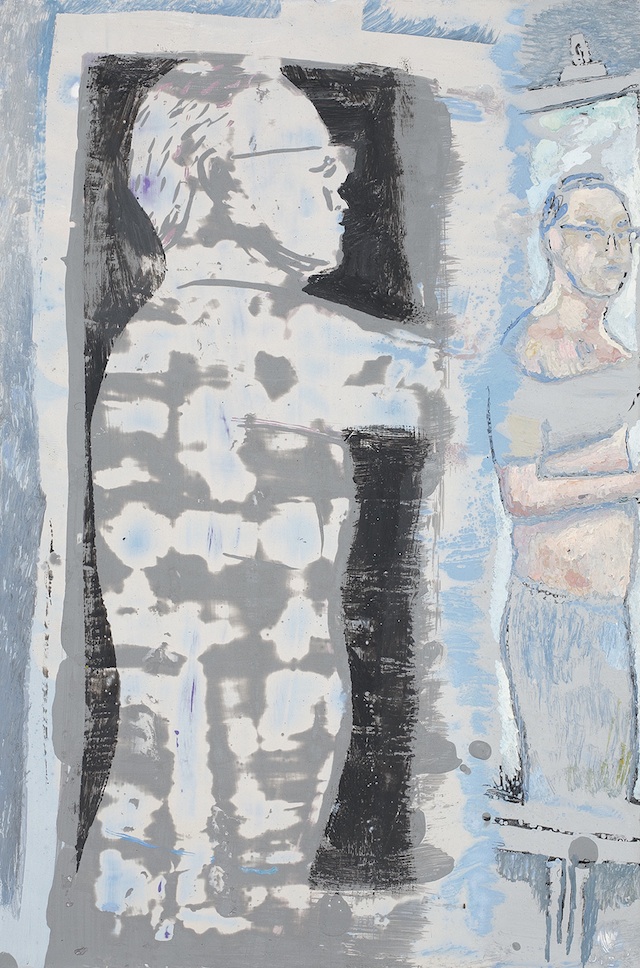
Encaustic is a medium produced from purified bees wax, and it is the most durable of all paint mediums. The paint suited my need to combine opacities, transparencies, direct applications and layers. It dries (or cools) almost immediately, so I was not held back by the slow methodology of oil paint.
The wax is applied hot and then 'fused' onto the surface with hot tools and radiated heat. Encaustic paint was used in ancient times to depict portraits of the dead to be buried in tombs. The quality of wax emulates the natural properties of flesh.
Many of the figurative forms in this series are depicted as if they were apparitions becoming substantial.
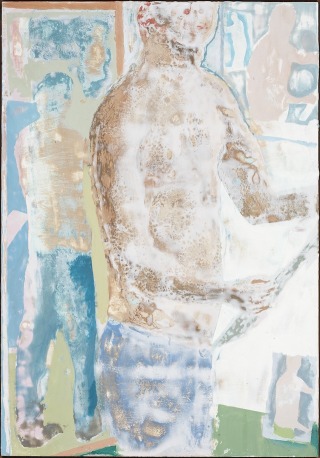
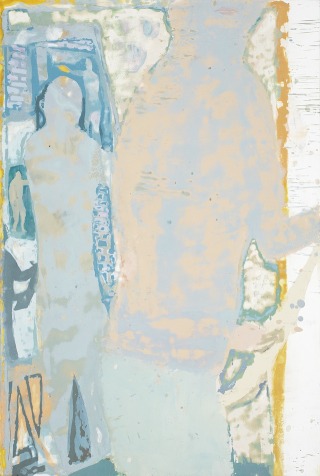
I sought to depict the familiar 'act of making' in a way that revealed a plain truth of my situation—a physical body lost in the reverie of internalised spaces. The perimeter of a mirror became the division between one perceived reality and another; the reflected painting became a partition or door to another domain.
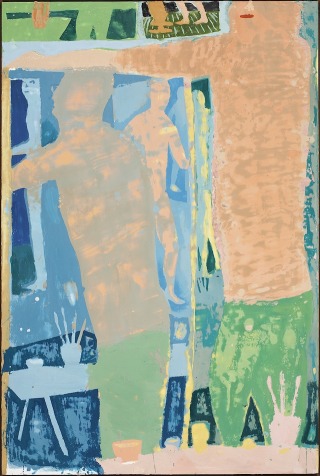
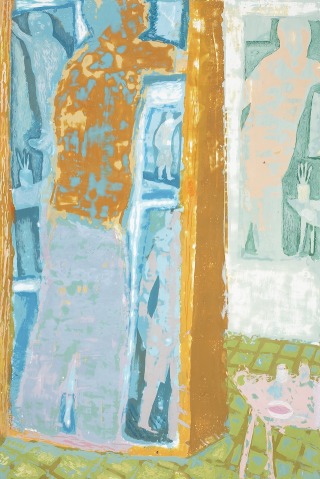
A lot of works eventually combined observation, memory and fantasy. As a way of resolving some of the enormous scaled work of the previous year, I re-depicted myself painting the work from memory, therefore detaching myself from the problem as if I were watching it happen to somebody else.
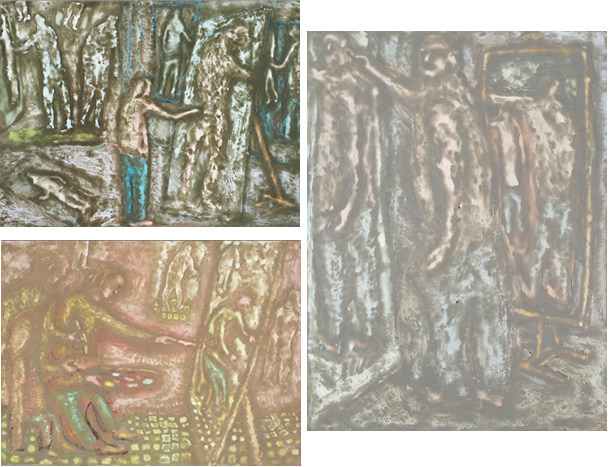
In some images, I described the 'self portraits' that a figure is creating as apparitions disconnected from physical boundaries, or inhabitants of alternative realities, reaching back to touch their creator.
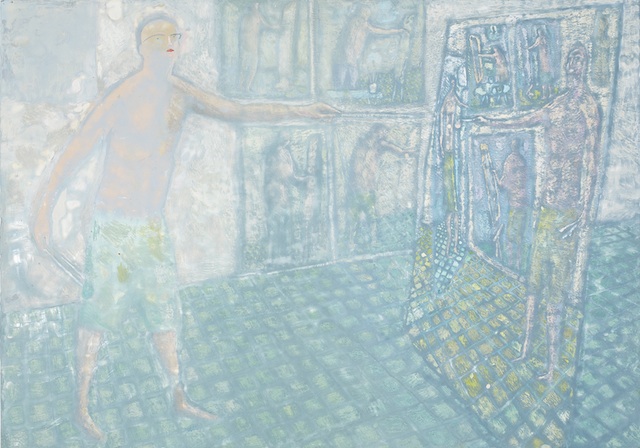
The extended brush represented a type of wand or antenna, sensitive to the nature of its own enquiry. My entire workshop seemed to resemble the interior of a giant head space. I made direct visual reference to my present surroundings as if they were a variation of the 'magician's workshop' that I had previously explored many years previously in Animal Magician's Hut, from Depot.
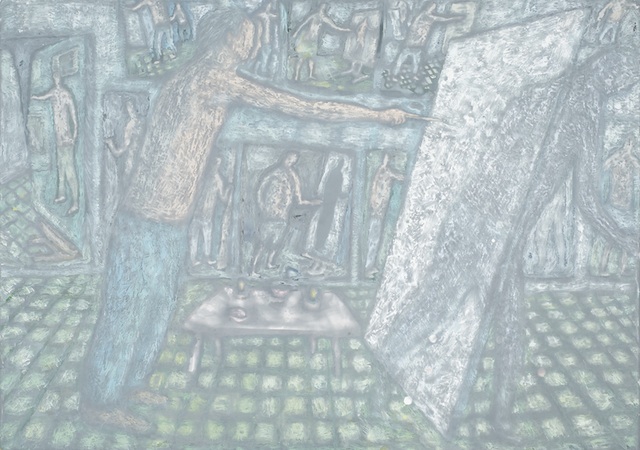
Various states of being, from hope to despondency, were depicted as if they were physical manifestations actively participating in the creative act. At times I gave more weight and significance to the space around the figure, or to structural elements in the studio. The reach towards a blank surface was described metaphysically, as an act of conjuring, yet I allowed familiar feelings of doubt and uncertainty to inform the tentative nature of the gesture.
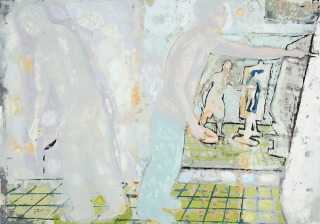
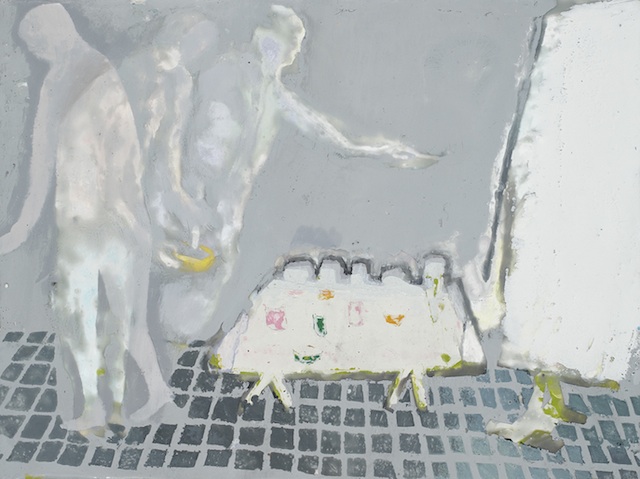
I imagined the artist extending his reach to give life to new forms in his own image, as if he were an alchemist producing homunculi.
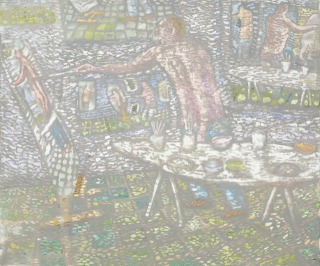
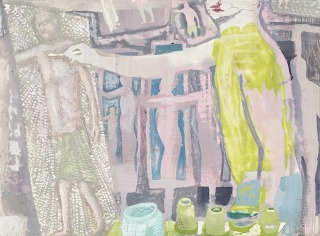
I wanted the human form to seem like it was created from the same amorphous matter that surrounds it and that it manipulates in order to make art.
I saw myself as a strange primal organism reaching beyond the physical confines of my environment into spaces inside the picture plane.
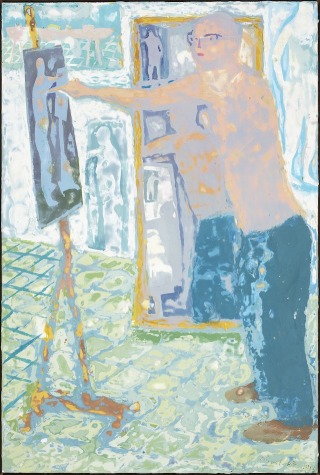
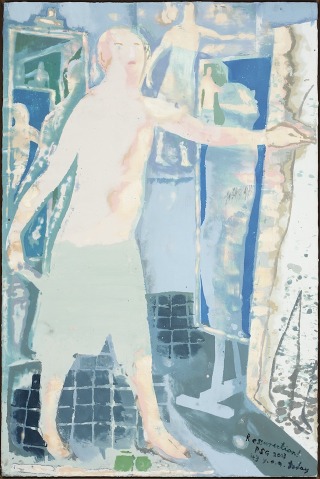
The use of wax as a paint medium enabled many applications, and I reworked the surface of the paintings many times.
The re-application of heat to the work allowed the continual development of the forms from the ground up. I used scrapers and sculpting tools to reveal substructures while painting, so that the works maintained a state of flux until resolution.

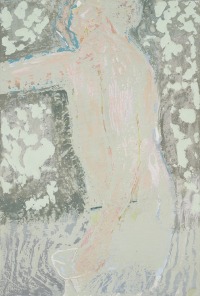
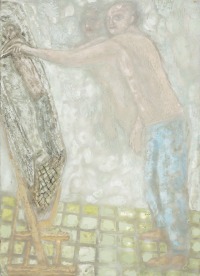
The use of multiple mirrors allowed alternative aspects of my reflection to be viewed at the same time, as if a dialogue with myself could be observed from a detached standpoint.
In these works, I positioned the front-facing portrait as if it were a puppet emerging from the extended arm, having its separate life within the world of reflection.
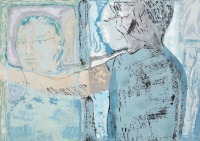
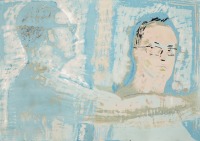
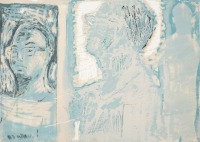
Direct observation served as a departure point for many of the works. It intrigued me to perceive of my reflection as a plastic presence, situated within the domain inside a mirror.
I located mirrors and previous paintings around me so that figurative forms seemed to emanate from my body at specific points, like messengers journeying out into the world of the imagination. I juxtaposed the active pose of these earlier pictures with the more contemplative state of mind involved in direct self-reflection.
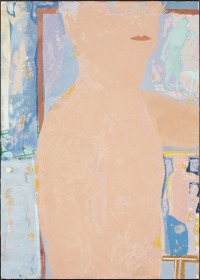
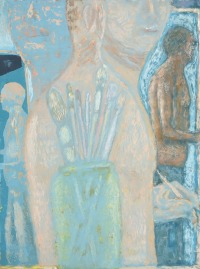
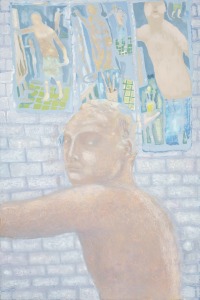
Other works accommodated a type of primitivism in their realisation, usually associated with graphic works in my oeuvre. The opacity and immediate drying time of the wax medium is well suited to this aspect of my expression, which had not been given as much voice in my use of oil paint.
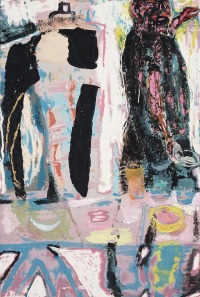
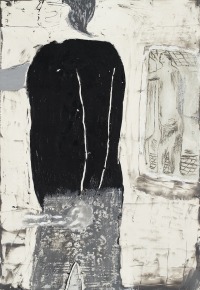
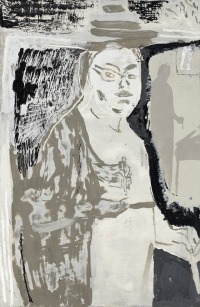
In the following images, I situated myself at one end of my studio so that my reflection was backlit by natural light each day at 3pm. I worked these images thoroughly, applying many layers and then repeatedly reducing form and colour to essential core values.
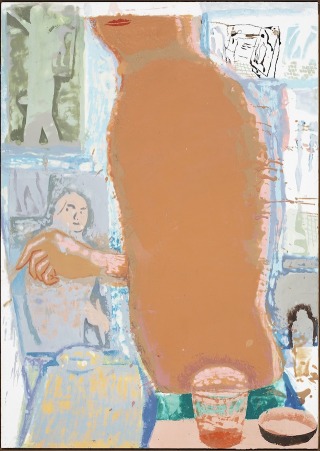
I worked to achieve a harmony between a naturalistic impression of the radiance in the atmosphere and the light of the imagination. I worked rapidly throughout changing light conditions, trying to depict the resonance of a body in space. The gentle intensity of the natural light helped me to use colours I had not previously considered.
I envisaged the form of the body arising like a spirit from the clutter and mess of the workspace around me. I saw the trunk of the body as a vibrant mass, ignited by a luminosity that might equate with creative potential. I portrayed the body in a primary state of evolution, as if emerging from the swamp of my surroundings. It interacts slightly with materials, shaping the world as it is shaped by it.
The hand emerges from the trunk like a newly formed growth. Empty vessels emulate the source of creativity, and brushes extend upwards like bouquets. The eyes of the central figure merge into a space beyond the top of the picture, as if to indicate a lofty realm not of this world.
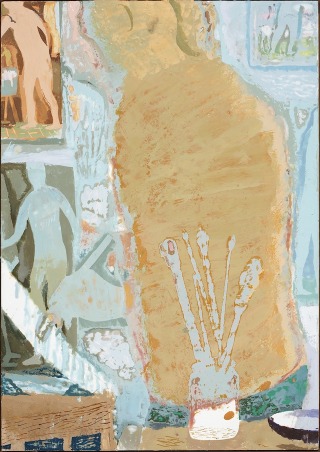
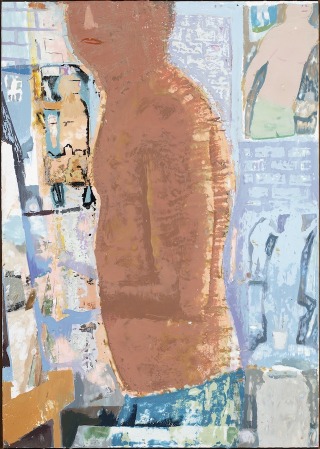
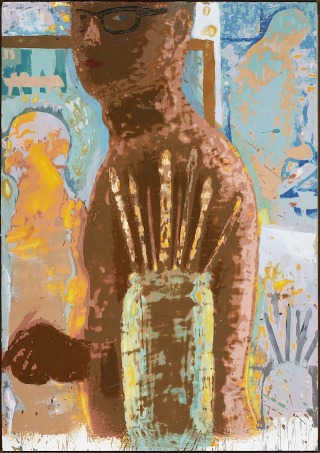
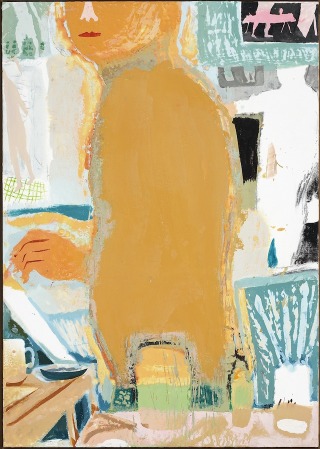
Viewing my reflection bathed in late afternoon sunlight, it was easy to imagine my inner form without the casing of the body. The figures situated in the background of the following two works were positioned to seem as if they were stepping forth from my brush.
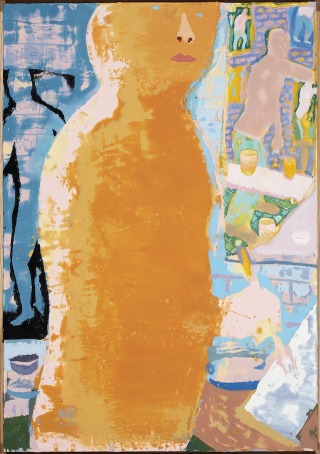
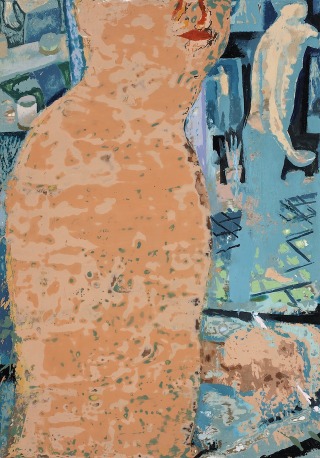
In works involving direct self-reflection, I became aware of the transference of my own body into the body of the picture. Further to this, the depiction of myself engaged in this process led to the suspicion of 'inter-dimensional beings', multiplying as pictures appeared within pictures.
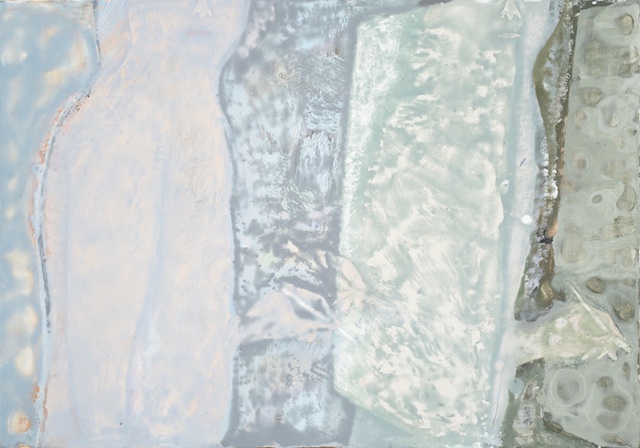
The following images show the gentle nature of an artist's touch as an intimate connection of one body onto another. The artist generates his own image so that it disconnects slightly and leaves to inhabit its own space.
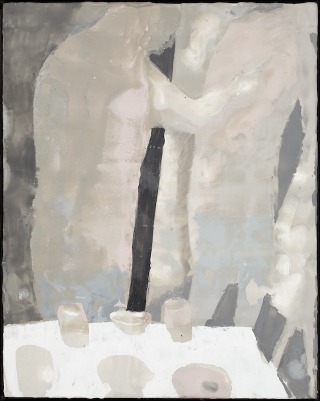

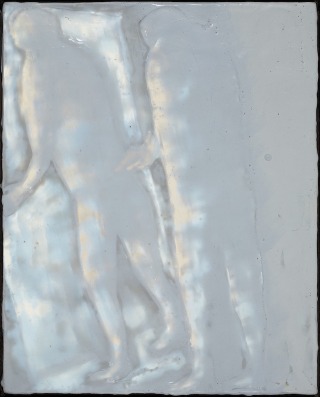
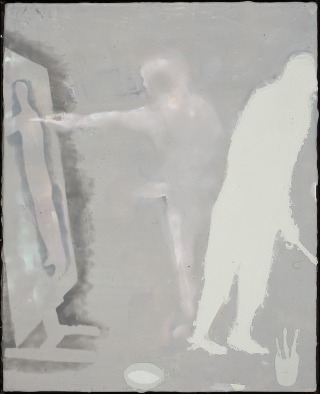
The relationship between the figure outside and inside the picture plane becomes ambiguous and complex as the various faltering motives of each are described in multiple.
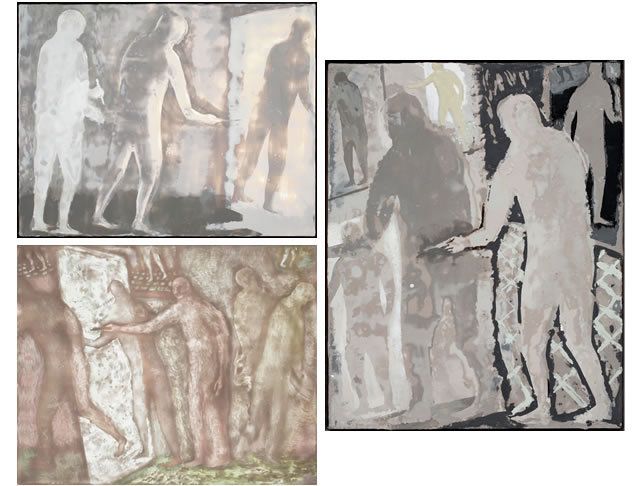
The works incorporate flat opaque areas and subtle transparencies to denote transient states of being. This was in keeping with my shifting awareness of what was being projected and what was being received between each figure, and the heightened presence one might attain in the act of becoming.
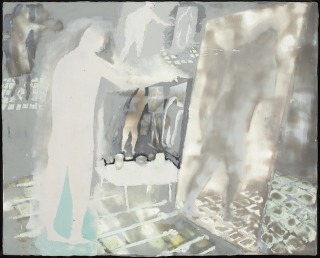
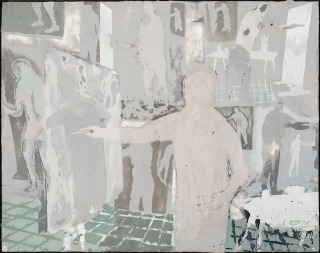
Bodies emanate visual echoes of themselves. Shade-like forms are represented, arriving or leaving through the interface of the picture plane. The implication of a separate entity trapped within the dimensions of an image had been explored in much earlier works, such as 'Dealing the Death of Me', from Song of substance.
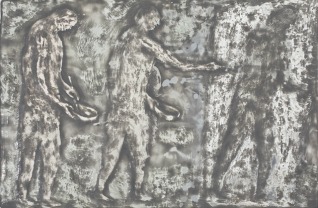
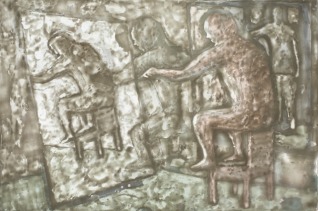
I imagined the space of some pictures as enclosed, tomb like, yet airy. The following three paintings have a close relationship to the figurative forms in 'Grotto' from Earthbound.
The depiction of artists in that series inhabits a similar subterranean space, each engraving their own image onto rock formations.
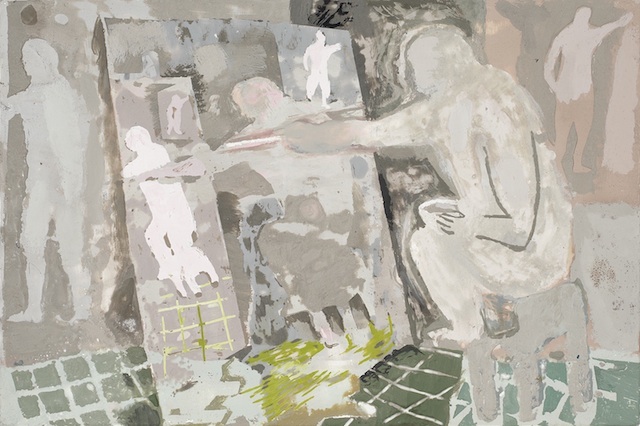
The malleable nature of wax allowed for many layers and adjustments to composition.
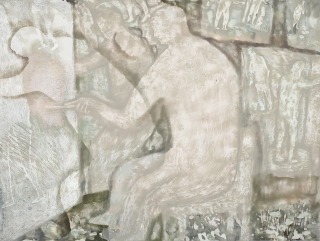
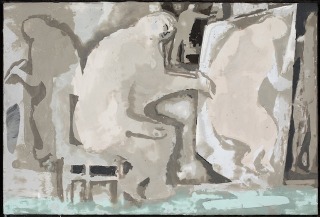
In some paintings, various physical features of the body were accentuated so that the artist's arm became a monstrous tool in itself, infiltrating unknown spaces with a type of blunt yet tender accusation.
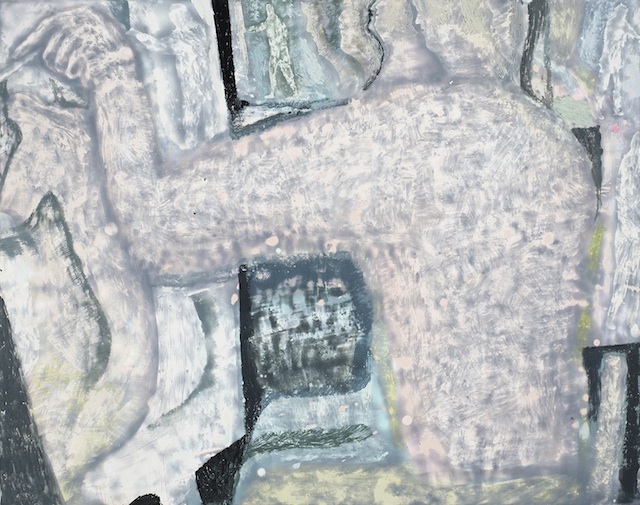
The bodily forms of figures in these pictures are primitive and rough-hewn, like the base material from which they emerge. I imagined a world made of coloured mud. Painting with vats of molten wax helped to stimulate this outlook.
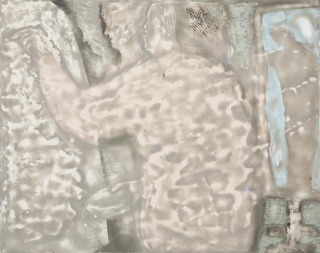
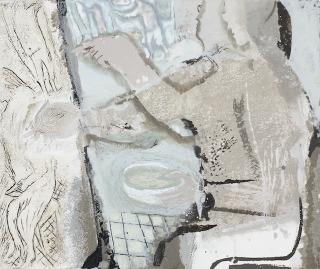
It was in works of this nature that I tried to describe the body as a physical encasement of some inner vital force. I tried to give a sense of being 'in the driver's seat', and directing a limb as if it were a giant unwieldy crane.
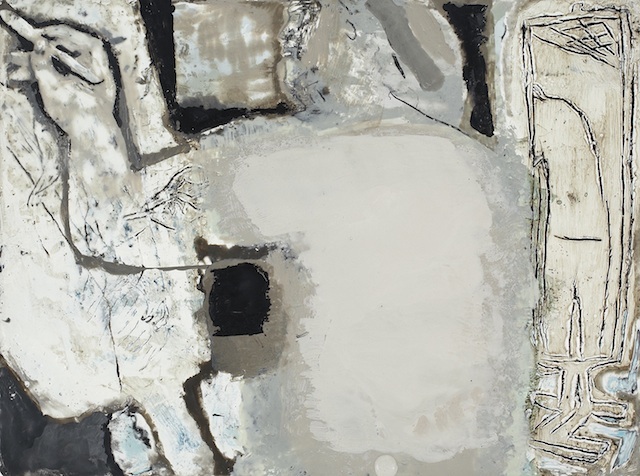
In some works, I depicted the extended reach away from the body from the internal regions, outwards. The projection of consciousness towards the picture plane is described as a physical occurrence.
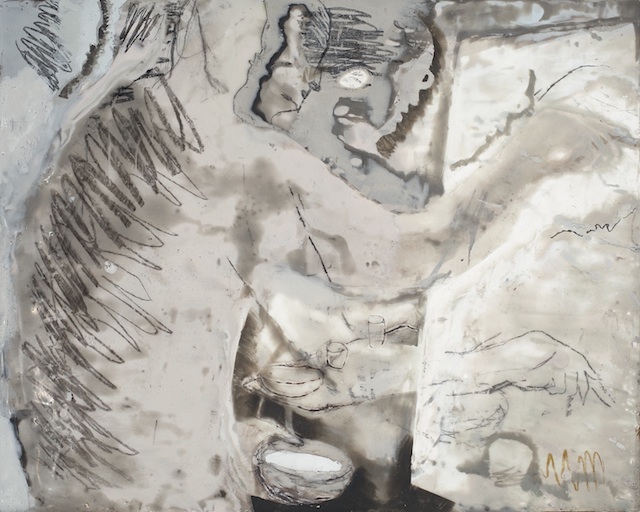
I allowed the organic forms of the melted encaustic to appear like thought forms moving from within to without the confines of the body.
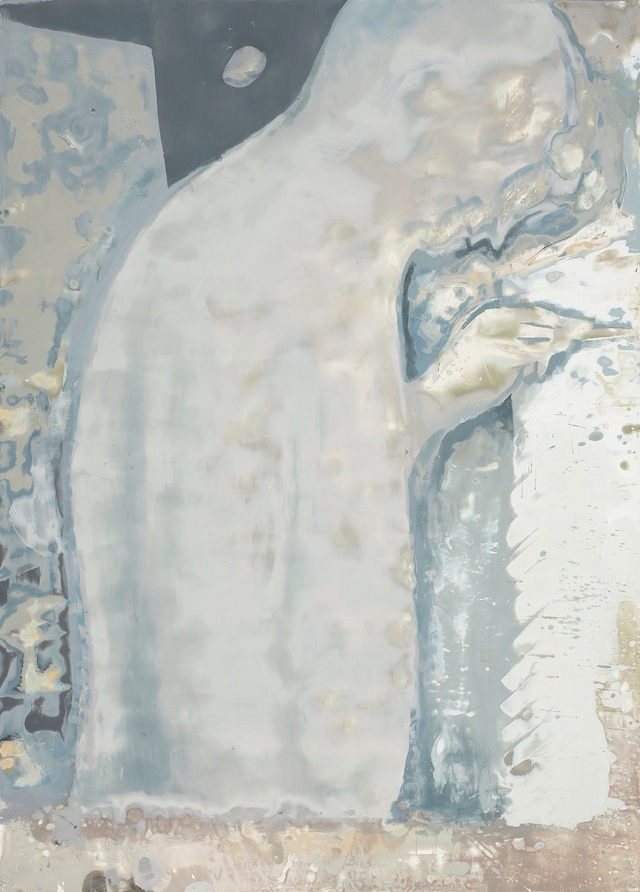
Many studies were made addressing the artist's engagement with surface. Works drawn from the imagination continued to be informed by my experiences observing my own reflection.
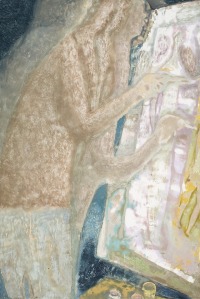
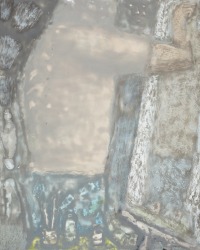
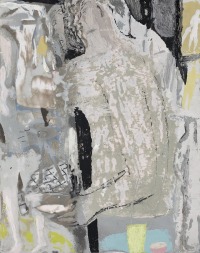
The image of the artist and the images he produces developed into integrated structures. The transition from the body of the artist into the body of work became less distinct.
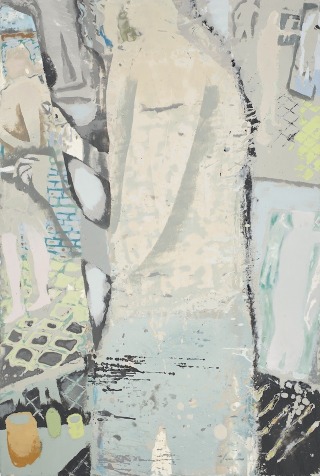
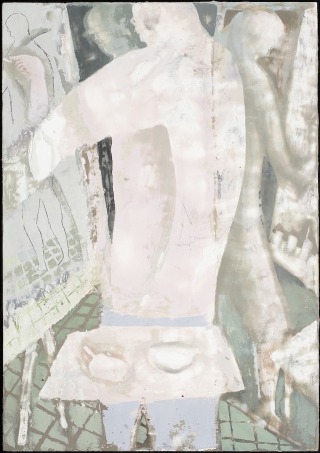
In some paintings the figure seems to be comprised entirely of the spirit that motivates its actions.
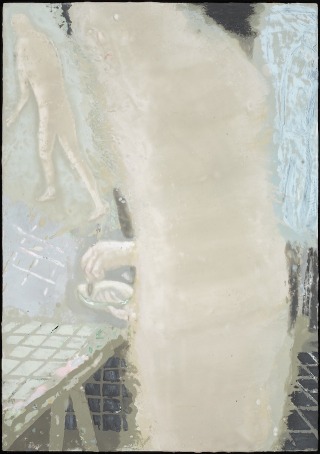
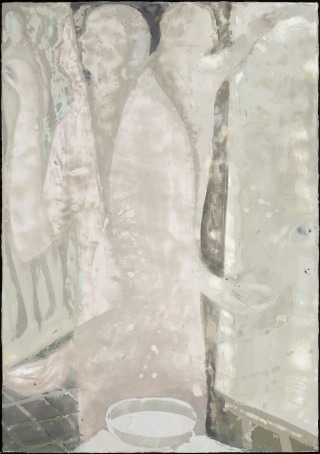
Although I repeatedly made new works as an elaboration on the last, most paintings eventually found resolution through reduction of form.
